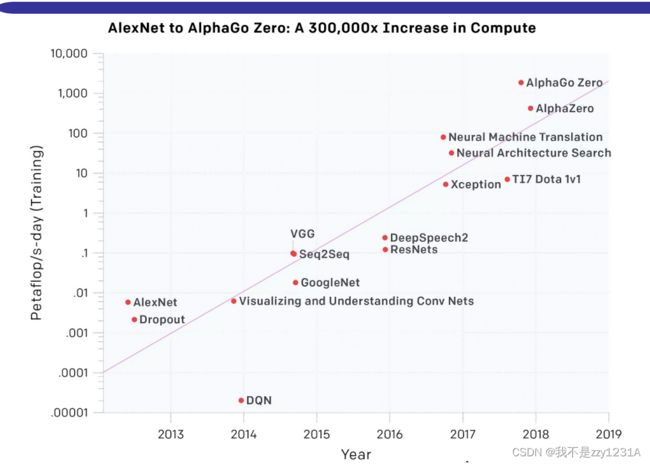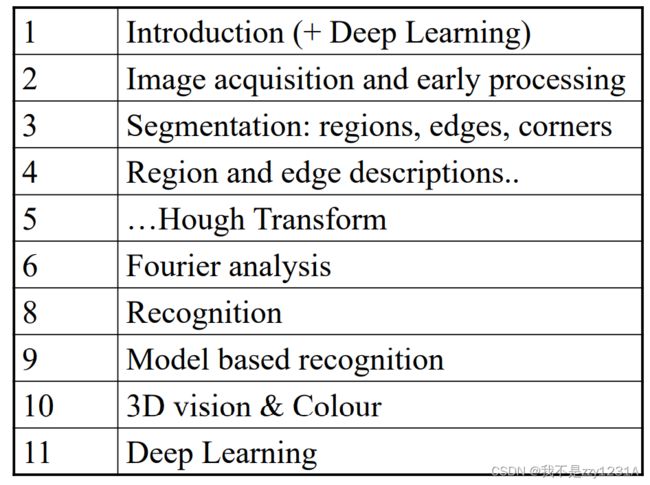计算机视觉Computer Vision课程学习笔记一之intro
第一章 cv任务内容包括三种:
各举出几个例子:
DL发展历程 DLdata bias Adversarial Attack Scalability Hyperparameters
Schedule
(Mathematical) Models
• geometric distortion几何变形
– pincushion/barrel distortion
• point spread function点扩散函数
• image enhancement图像增强
– histogram equalisation: constant histogram
• noise噪声
– Gaussian, salt and pepper
• thresholding阈值
– 2 modes
– Gaussian
– matching moments
– entropy
• image segmentation图像分割
– constant region intensity
• edge detection边缘检测
– step/ramp function in intensity
• frequency filtering频率滤波
– lowpass, highpass, bandpass functions
• texture analysis纹理分析
– power spectrum: power law
• classification feature space boundaries分类特征空间边界
– linear horizontal/vertical
– linear arbitrary
– quadratic
• skin detection皮肤检测
– Gaussian Mixture Model
Levels of analysis:
– Low level vision: manipulate pixels
– Mid level vision: extract features
– High level vision: reason about objects
A Typical computer vision tasks
• Measure or inspect known objects
– predictable view of known object
– measure dimensions, position, count
• Manufacturing
– count parts
– check castings
– position workpieces
• Inspection
– road surfaces, interior of pipes
– printed circuit boards - tracks, solder,
– packaging - bottles, labels
• Agriculture and food processing
– sort/grade fruit, vegetables, grain
– check ripeness, quality, size
– check confections (pizzas, chocolates)
• Recognise or identify unknown objects
– predictable view of unknown object
– object is one of a set known to the system
• Recognise symbols
– read text, addresses, post codes
– read product labels, serial numbers
• Recognise biological specimens
– cancerous cells in cervical smears
– chromosomes (karotyping)
• Recognise people
– faces
– fingerprints
– hands, ears, gait, retinal patterns, …
• Recognise unknown vehicles
– friend/foe aircraft
• Interpret or understand visual scene
– unpredictable view (angle, lighting, occlusions)
– object in scene not necessarily known to the system
• Tackling more difficult vision problems
– unrestricted scene contents
– uncontrolled viewing angle, lighting, occlusions
– impossible to use ‘simple’ prototypes
• Beyond the literal picture: semantics
– recognise a ‘road’, ‘chair’, ’table’
• Requires high level, abstract
– knowledge representations
– reasoning mechanisms
– control structures
• Possible applications
– automous vehicle guidance (land, sea, air)
– robots, …
B Deep Learning for Computer Vision
Artificial Neural Networks
History of Deep Learning for Computer Vision
AI Winter
Convolutional Neural Networks
ImageNet
The Rise of Deep Learning
Limitations of Deep Learning

这个图没搞懂

DL:data bias
Adversarial Attack
Scalability
Hyperparameters, etc.


